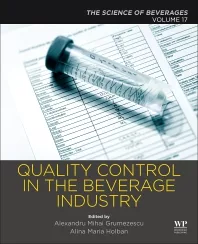Beverage industry achieves goal of reducing calories in schools
America’s leading beverage companies have reduced the calories in beverages shipped to U.S. schools by 88 percent since 2004, the American Beverage Association (ABA), Washington, D.C., reported. The results show that the ABA and the Alliance for a Healthier Generation, a joint initiative of the American Heart Association and the William J. Clinton Foundation, delivered on their three-year commitment to remove full-calorie soft drinks from schools and replace them with lower calorie, smaller portioned beverages.
At the beginning of the 2009 school year, 98.8 percent of schools and school districts aligned with the guidelines, according to the “Alliance School Beverage Guidelines Final Progress Report.” The report was compiled by Keybridge Research LLC, an independent firm, which has prepared two previous progress reports.
“A critical component of the Alliance’s national effort to end childhood obesity has been our work with the beverage industry to reduce the amount of calories our kids consume in schools,” said former President Bill Clinton, founder of the William J. Clinton Foundation, who leads the Alliance along with California Governor Arnold Schwarzenegger and the American Heart Association President Clyde Yancy, in a statement. “We are encouraged by the significant progress we’ve made and look forward to continuing our work with participating schools, companies and the American Beverage Association to give young people the options and opportunities they need to lead healthier lives.”
Under the guidelines presented in 2006, America’s major beverage companies, including The Coca-Cola Co., PepsiCo, Dr Pepper Snapple Group and their local bottlers worked with schools to offer lower calorie options. In elementary and middle schools, beverage selections were limited to 100 percent juice, low-fat milk and bottled water. The options were joined by diet beverages, calorie-capped sports drinks, flavored waters and teas in high schools. Full-calorie soft drinks were removed from schools, and the industry also offered more lower-calorie and smaller portioned beverages.
"It was the right thing to do in 2006, and it continues to be the right thing to do today," said Sandy Douglas, president of Coca-Cola North America, in a statement. "The Coca-Cola system is extraordinarily proud of what we have accomplished and how we are making it easier for schools and parents to help young people make balanced choices."
Beverage companies have spent thousands of hours educating and training sales forces and have invested millions of dollars in retrofitting vending machines, repackaging products and reconfiguring production lines and equipment since announcing the guidelines in 2006.
Looking for a reprint of this article?
From high-res PDFs to custom plaques, order your copy today!






